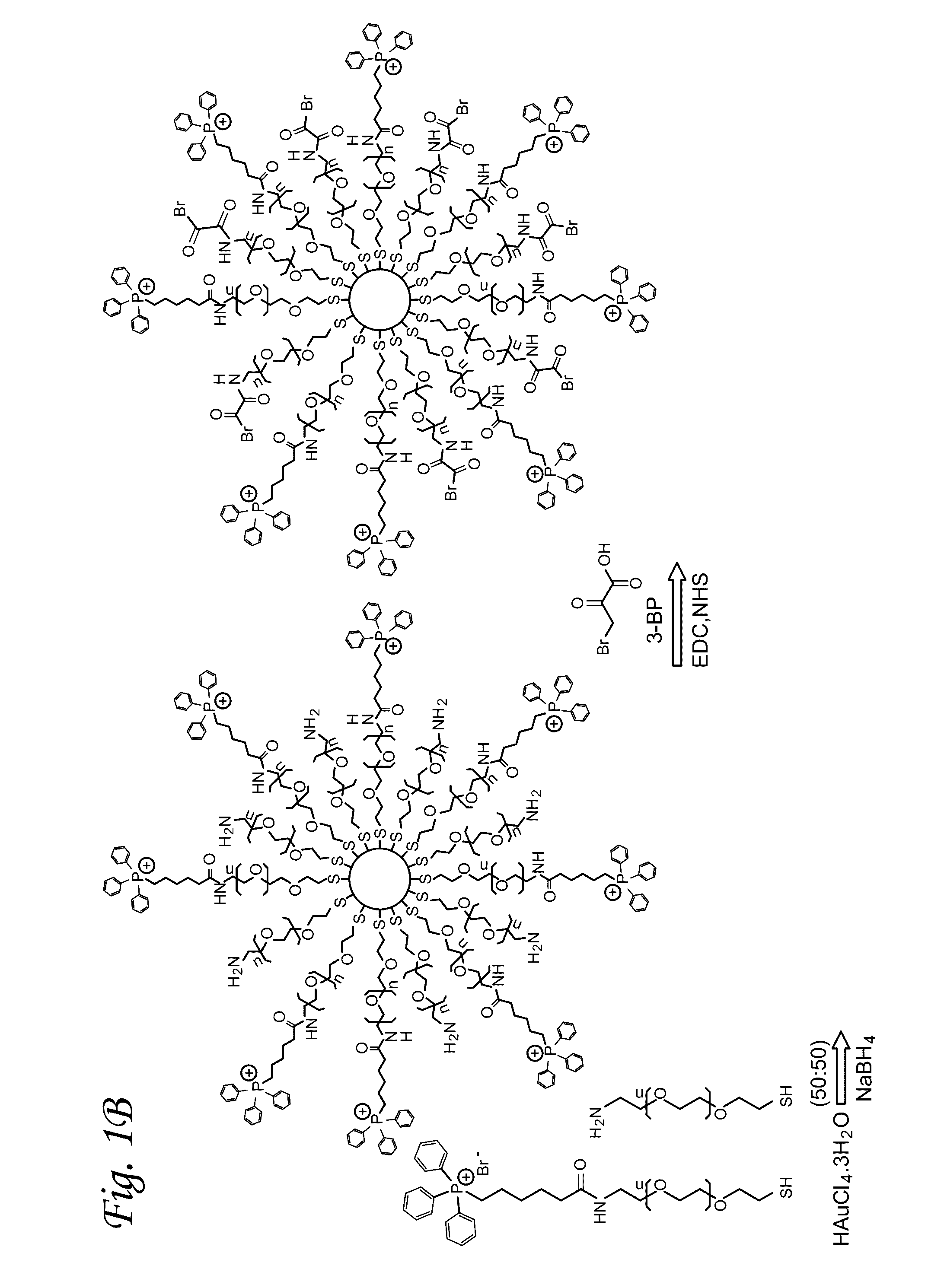Mitochondrial delivery of 3-bromopyruvate
a technology of 3-bromopyruvate and mitochondrial delivery, which is applied in the field of nanoparticles, can solve the problems of limited clinical potential of 3-bp, -bp will face a tremendous challenge for its uptake by the mcts, and achieves the effects of reducing the toxic effect of 3-bp, improving pharmacokinetics, and improving overall treatment efficacy
- Summary
- Abstract
- Description
- Claims
- Application Information
AI Technical Summary
Benefits of technology
Problems solved by technology
Method used
Image
Examples
examples
[0052]Experimental
[0053]Cell Line and Cell Culture. Human prostate cancer PC3, DU145 cells and RAW 264.7 macrophages were procured from the American type culture collection (ATCC). DU145 cells were grown at 37° C. in 5% CO2 in Eagle's minimum essential medium (EMEM) supplemented with 10% fetal bovine serum (FBS) and 1% penicillin / streptomycin. PC3 cells were grown in Roswell Park Memorial Institute (RPMI) 1640 medium supplemented with 10% FBS and 1% penicillin / streptomycin. RAW 264.7 macrophages were cultured in RPMI media supplemented with 10% FBS and 1% penicillin / streptomycin. Cells were passed every 3 to 4 days and restarted from frozen stocks upon reaching pass number 20.
[0054]Synthesis of TPP-(CH2)5-COOH. 6-Bromohexanoic acid (0.5 g, 2.6 mmol) and triphenylphosphine (0.7 g, 2.7 mmol) were dissolved in acetonitrile (15 mL). The resulting mixture was heated to a reflux under nitrogen flow for 24 h. The solution was cooled to room temperature and concentrated under reduced pressu...
PUM
 Login to View More
Login to View More Abstract
Description
Claims
Application Information
 Login to View More
Login to View More - R&D
- Intellectual Property
- Life Sciences
- Materials
- Tech Scout
- Unparalleled Data Quality
- Higher Quality Content
- 60% Fewer Hallucinations
Browse by: Latest US Patents, China's latest patents, Technical Efficacy Thesaurus, Application Domain, Technology Topic, Popular Technical Reports.
© 2025 PatSnap. All rights reserved.Legal|Privacy policy|Modern Slavery Act Transparency Statement|Sitemap|About US| Contact US: help@patsnap.com



